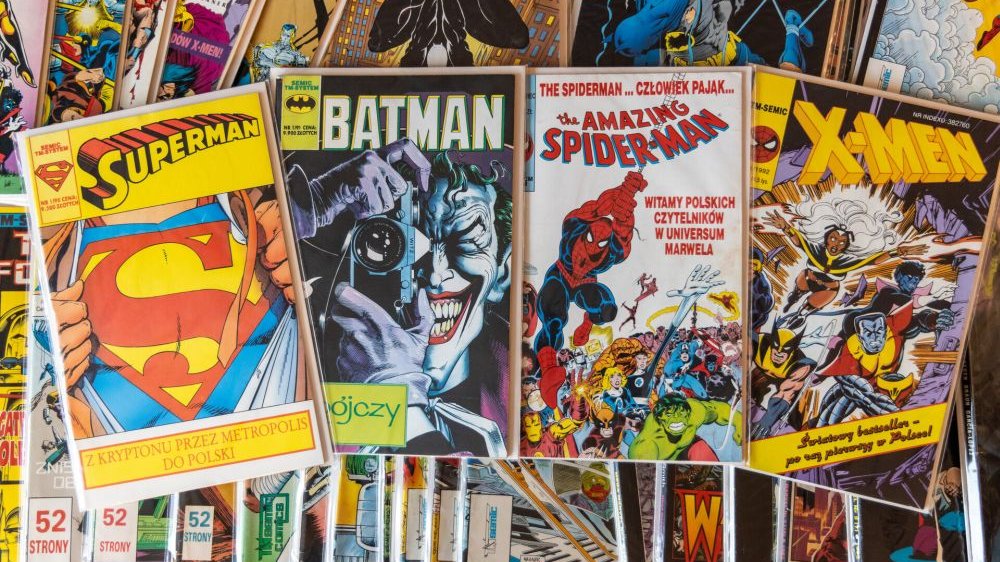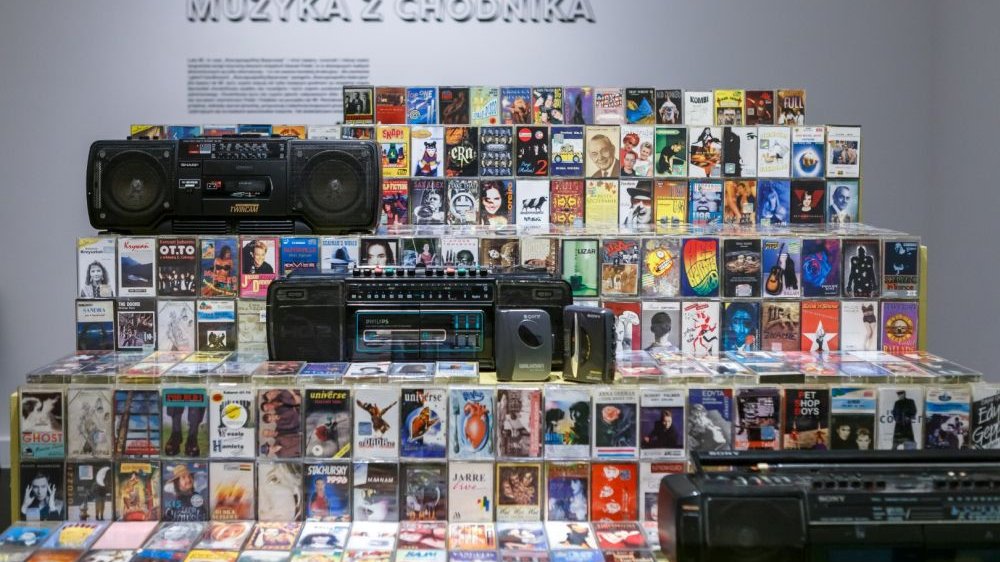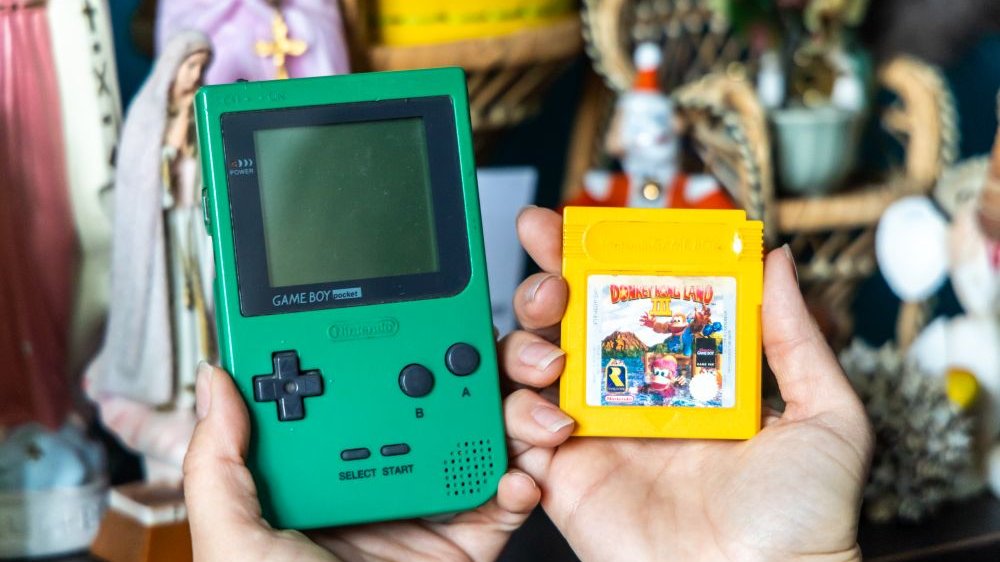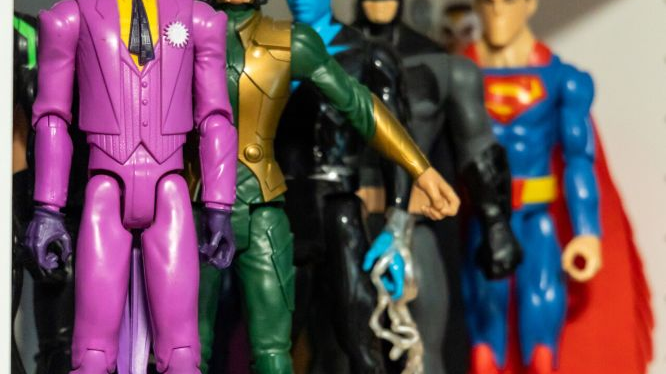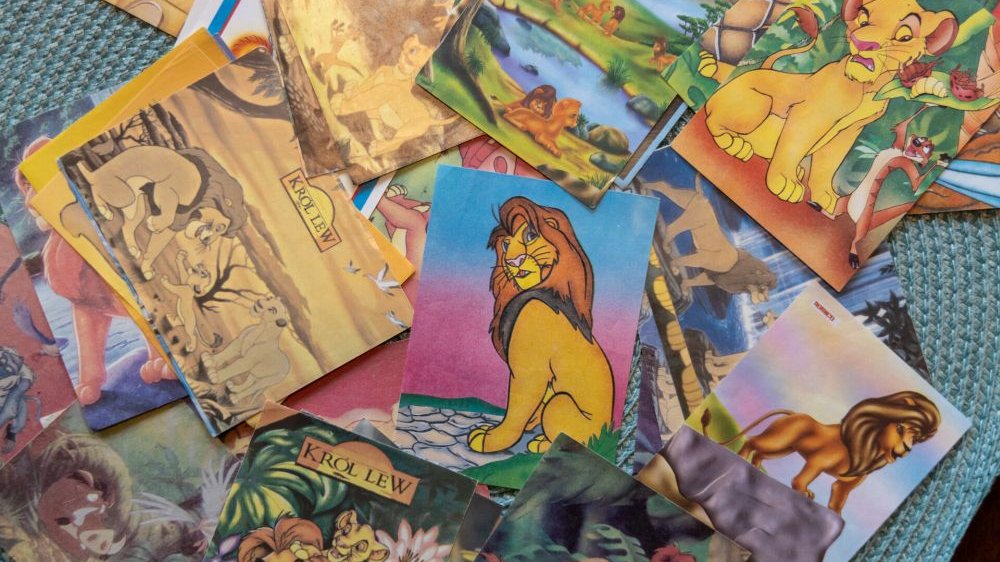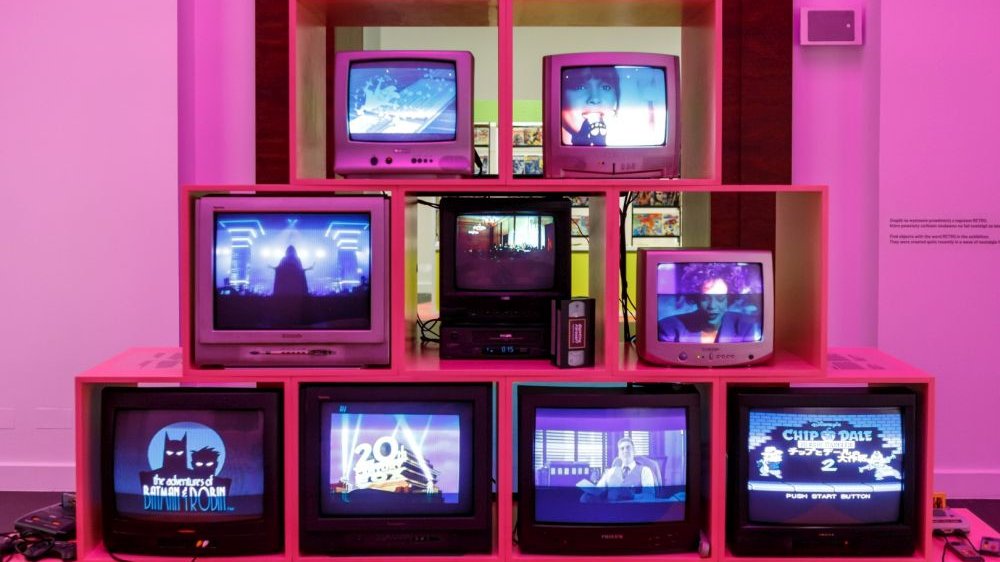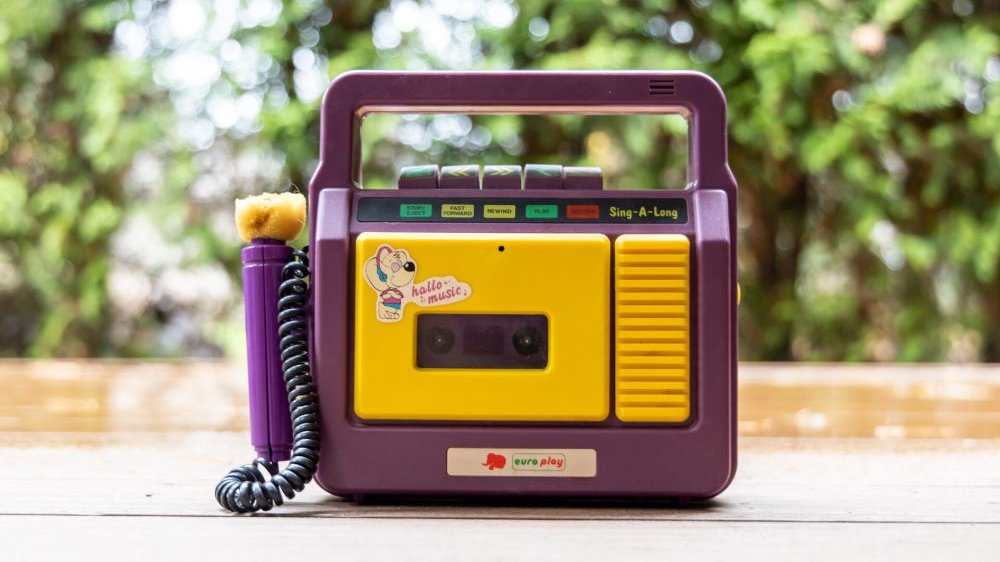Personal Nostalgia
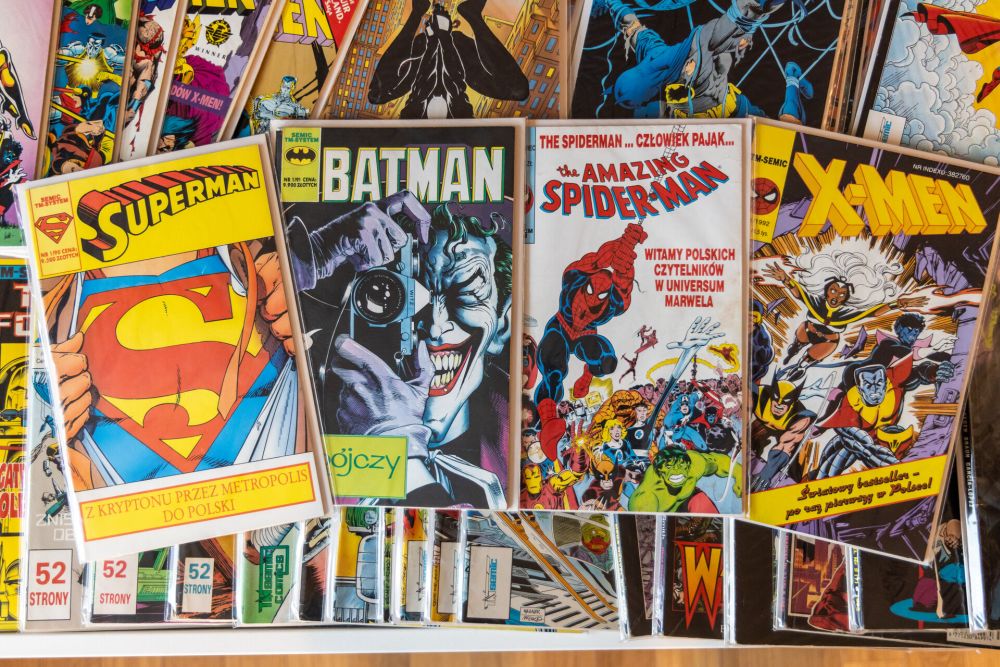
"The Nineties Forever! Pop Culture in 1990s Poland" takes us on a sentimental journey through time, focusing not on political or systemic changes, but on personal transformations. Through the exhibition, Żaglewski collects individual stories and memories, using these to weave a narrative that guides us through the various "temples of the "90s." The entire project carries a nostalgic vibe and, as the curator points out, does not aim to be an accurate reflection of the 1990s. Instead, it filters these times through pop-culture memory archives, presenting them in a somewhat distorted light. After all, how can we separate the cultural from the political realities? The emphasis is on the nostalgic image of the 90s that lives on in the minds of those who grew up during that time. These are be moments tied to fond memories, comfort, pivotal events, and significant relationships. This narrative gives the exhibition a personal touch, not only because the audience will find pathways that stir up memories of the past, but also due to how the collection is structured. It is a collection of private archives.
The exhibition space has been transformed into a unique environment. "The Nineties..." is split into six main themes, each offering a nostalgic journey. Each theme is showcased through a range of different artefacts, all tied together by colourful, geometric shapes. These shapes contrast with the white walls of the space, which simply feature descriptions of the various stages of the exhibition. This creates a surreal atmosphere, further highlighting the utopian world of the "90s-a world that still feels very much alive in the memories of many.
The journey begins in the world of consoles and early televisions. Visitors can sit down in front of a pyramid-shaped arrangement of TV sets, and immerse themselves in the world of films or games. Nearby, a display case holds iconic consoles such as the Pegasus, Super Nintendo, Atari Lynx, and many more. After a while, a few people settle onto the sofa and start chatting about one of the films that is currently playing. I don't know yet what's next, but I can already hear the lines like: "I have one of these!" or "I used to listen to that!" Soon, music fills the air, and although I can't quite place the song, it feels oddly familiar. The sound of cassette tapes clicking into place, the distinctive "turning on" sound of the player-suddenly, we're transported to the land of the "Muzyka z chodnika" collection. Ahead of us lies an impressive collection of cassettes from stars like Natalia Oreiro, Myslovitz, Ich Troje, and the italo-disco scene, among others. Just think about it: one of the best birthday presents back in the day was a homemade mix tape!
To the beat of those past sounds flowing from the speakers, we move on to an installation mimicking a Ruch kiosk. At the height of the 1990s, there were over 30,000 kiosks in Poland: the first opened in 1919, and the last closed in December of last year. So, what can we find in the 90s-style kiosk? Absolute classics, including comics and magazines such as "Bravo", "Popcorn", "Batman", "Donald Duck", "Diana", and "Alf". Most of them are behind the characteristic wire mesh, reminiscent of traditional display windows. After all, checking out the latest releases in the kiosk windows used to be a full-fledged part of daily routine! From the kiosk, we move on to the cassette obelisk. "Flashdance", "Back to the Future", "The Jetsons", "Superstars", "The Lion King", "The Revenge of the Pink Panther"... the list could go on for ages. It's impossible to view this collection purely in terms of cultural artefacts; the exhibition fills our heads with vivid memories and a clash of the now and then. Streaming a series on Netflix or HBO is incredibly convenient, giving us instant access to the latest releases, but it can't replicate the thrill of visiting a video rental place and picking out an eagerly awaited cassette or DVD.
There are still two more stops, and the first one is "Teenage Turtles and Their Pals." Naturally, no exhibition about the 1990s would be complete without the first Transformers, Barbie dolls, My Little Ponies, and Lego sets. In one of the display cases, even a Furby has found its place! Some exhibits gaze at us from museum showcases, while others are placed nearby for us to interact with. The final element of the "Nineties" exhibition is a space with arcade machines, where we can choose between "The Simpsons" and "Phoenix". The symbolic end of this nostalgic journey is an unassuming station, where visitor are encouraged to anonymously share their own stories about the 90s and record them on a cassette tape. You can also listen to the stories of others.
The entire project is centred on audience participation. Although the space may seem unremarkable, it quickly becomes apparent that the various themes pull us in with remarkable speed. I grew up in the 90s, and although not all of the stories presented in the exhibition are directly tied to my own experience, I must admit it stirred up many memories for me-thus fulfilling one of its main aims. In the curator's text, Żaglewski quotes Svetlana Boym's definition of nostalgia, which speaks of "longing for a home that no longer exists or never existed" and reflects on what lies at the heart of the nostalgia each of us carries. This adds another layer of the exhibition, one that reveals itself instantly but takes time to mature. As Boym points out, nostalgia is a broad concept, also referring to a longing "for unfulfilled dreams of the past and those visions of the future that have lost their relevance." It is up to us to define these personal, often multi-layered nostalgias.
Klaudia Strzyżewska
translation: Krzysztof Kotkowski
The Nineties Forever! Pop Culture in 1990s Poland, curated by Tomasz Żaglewski, Zamek (Castle) Cultural Centre, open until 27 July
© Wydawnictwo Miejskie Posnania 2025
See more

From One Celebration to Another

Christmas Markets and Fairs with Attractions

Truly Festive Vibes

